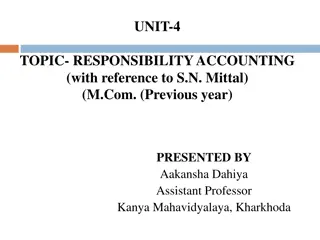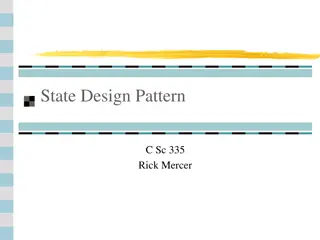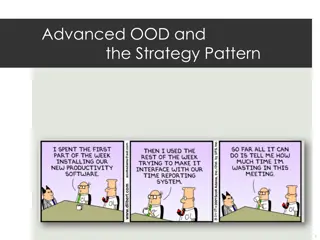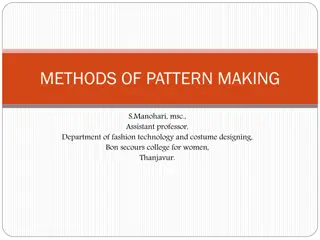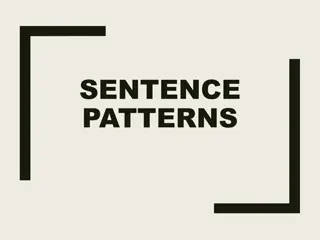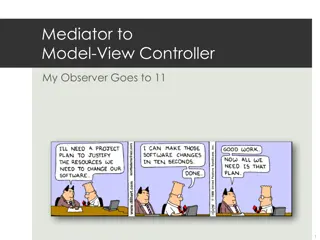Understanding Chain of Responsibility Pattern
Chain of Responsibility is a behavioral design pattern where a request is passed through a chain of handler objects. Each handler decides whether to process the request or pass it on. This pattern promotes loose coupling and separation of concerns, enhancing flexibility and maintainability in software systems.
Uploaded on Mar 05, 2025 | 0 Views
Download Presentation

Please find below an Image/Link to download the presentation.
The content on the website is provided AS IS for your information and personal use only. It may not be sold, licensed, or shared on other websites without obtaining consent from the author.If you encounter any issues during the download, it is possible that the publisher has removed the file from their server.
You are allowed to download the files provided on this website for personal or commercial use, subject to the condition that they are used lawfully. All files are the property of their respective owners.
The content on the website is provided AS IS for your information and personal use only. It may not be sold, licensed, or shared on other websites without obtaining consent from the author.
E N D
Presentation Transcript
CHAIN OF RESPONSIBILITY
MODEL SITUATION Obtaining building permit:
SIMPLE IMPLEMENTATION IN C# static bool ApplyForBuildingPermit(Permit permit) { if (!ZoningDepartment.CheckSitePlan(permit)) return false; // Site plan did not meet zoning regulations else if (!BuildingDepartment.CheckBuildingCodes(permit)) return false; // Building plan did not meet building codes else if (!FireDepartment.CheckFireSafety(permit)) return false; // Fire safety plan did not meet regulations else return true; // Permit approved }
SIMPLE IMPLEMENTATION SUMMARY The implementation may become hard to maintain and modify as the number of departments and permit requirements grow. It violates the Open-Closed Principle as new departments or permit requirements will require modification of the existing code. The implementation may result in code duplication or long method chains. It may be harder to test due to the tight coupling of the code and logic. It is not modifiable during runtime.
OOP IMPLEMENTATION IN C# public abstract class Department { public abstract bool CheckPermit(Permit permit); } public class ZoningDepartment : Department { public override bool CheckPermit(Permit permit) { return permit.SitePlan.MeetsZoningRegulations; } } public class BuildingDepartment : Department { public override bool CheckPermit(Permit permit) { return permit.BuildingPlan.MeetsBuildingCodes; } } public class FireDepartment : Department { public override bool CheckPermit(Permit permit) { return permit.FireSafetyPlan.MeetsRegulations; } } public class PermitApprovalChain { private List<Department> departments = new List<Department>(); public PermitApprovalChain() { departments.Add(new ZoningDepartment()); departments.Add(new BuildingDepartment()); departments.Add(new FireDepartment()); } public bool ApplyForBuildingPermit(Permit permit) { foreach (Department department in departments) { if (!department.CheckPermit(permit)) { return false; // Permit denied } } return true; // Permit approved by all } }
OOP IMPLEMENTATION SUMMARY It may result in slower performance due to the overhead of managing a list of objects. It may not be flexible enough to handle complex scenarios with multiple decision points or branching logic. It may not provide a clear separation of concerns and centralizes point of control. Client must keep links to all department objects and must understand the structure of the approval process
CHAIN OF RESPONSIBILITY INTRODUCTION It is behavioral design pattern. The idea is to create a chain of handler objects, where each handler can decide whether to handle a request or pass it to the next handler in the chain. The pattern promotes loose coupling and separation of concerns, as each handler is responsible for a specific task. It provides flexibility and extensibility, as new handlers can be added or removed from the chain at runtime without affecting the overall structure of the code. Commonly used in scenarios where there are multiple objects that can handle a request, or where the handling of a request requires a series of steps or decision points.
FINAL IMPLEMENTATION IN C# public abstract class Department { protected Department successor; public class PermitApprovalChain { private Department entryPoint; public void SetSuccessor(Department successor) { this.successor = successor; } public PermitApprovalChain() { entryPoint = new ZoningDepartment(); var buildingDepartment = public abstract bool CheckPermit(Permit permit); } public class ZoningDepartment : Department { public override bool CheckPermit(Permit permit) { if (permit.SitePlan.MeetsZoningRegulations) { return successor != null ? successor.CheckPermit(permit) : true; } return false; } } new BuildingDepartment(); var fireDepartment = new FireDepartment(); entryPoint.SetSuccessor(buildingDepartment); buildingDepartment.SetSuccessor(fireDepartment); } public bool ApplyForBuildingPermit(Permit permit) { return entryPoint.CheckPermit(permit); } }
REAL-LIFE EXAMPLES Web applications: The Chain of Responsibility pattern is often used to handle requests through a middleware chain, where each middleware component can perform specific tasks or validations before passing the request to the next component. (Express.js middleware in Node.js, ASP.NET middleware in .NET). GUI toolkits: The pattern is used to handle user input events and delegate them to the appropriate UI component or event handler. (Java Swing, WinForms) Logging frameworks: The pattern is used to handle logging requests and pass them through a chain of loggers. Exception handling: The pattern is used to handle exceptions through a chain of handlers with increasing levels of abstraction or specificity, such as catching exceptions at the application level, then at the module level, and so on.
RELATION TO COMPOSITE Both involve creating hierarchies of objects and delegating responsibilities. They differ in their intent and implementation. In some cases, the Composite and Chain of Responsibility patterns can be combined to create complex hierarchical structures
THANK YOU FOR YOUR ATTENTION
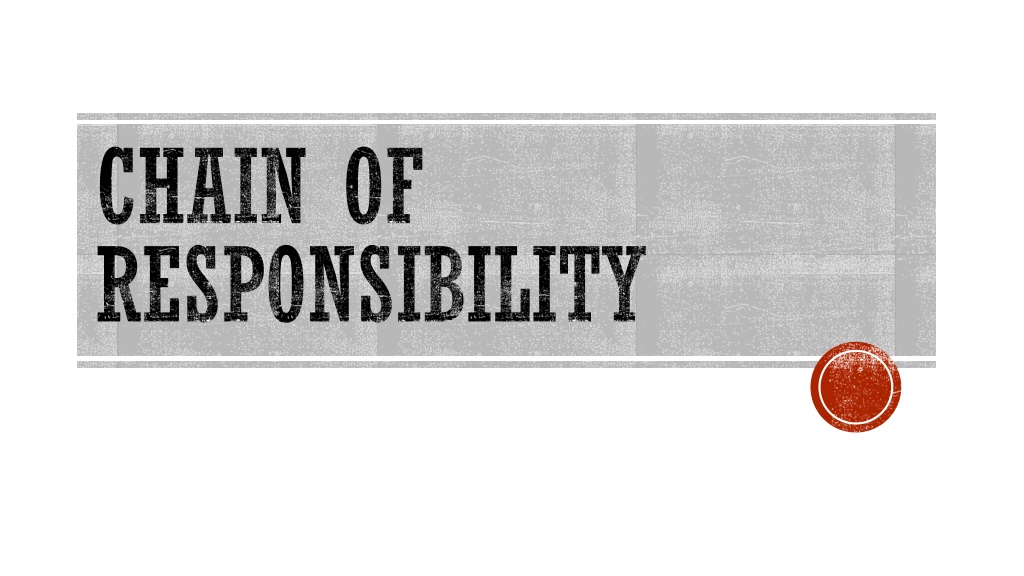
 undefined
undefined





































